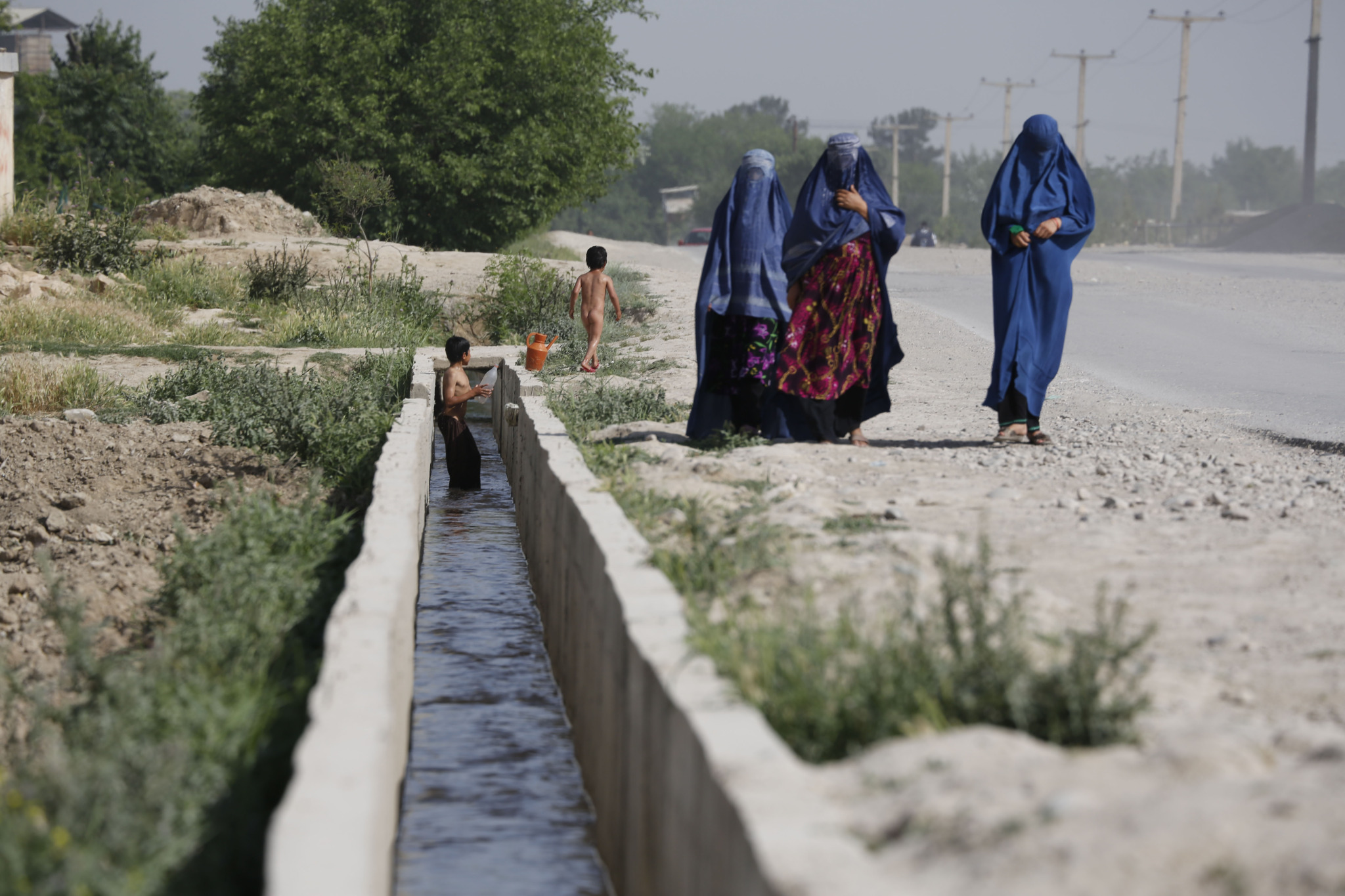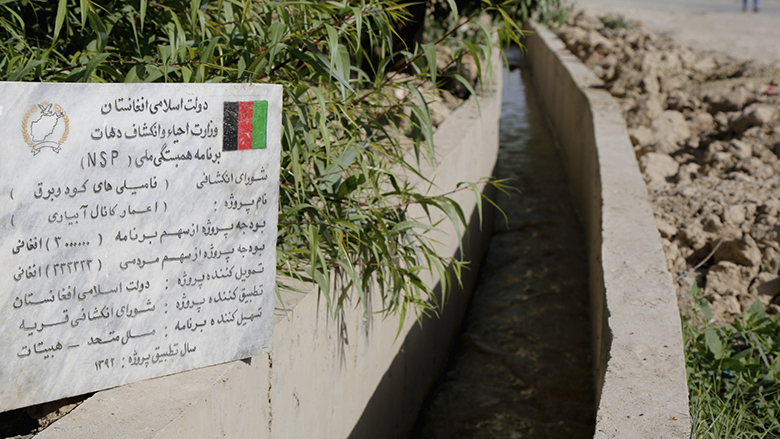The small locality of Kod-e Barq was established 40 years ago to house workers of the Kod-e Barq fertilizer factory and their families. Although there are no big fields here, residents can grow vegetables in their own little yards—thanks to the water from the canal. “The canal has been a big help in people’s daily lives as well as a noteworthy financial support to them,” says Amir Shah Ayubi, treasurer of the Kod-e Barq Community Development Council (CDC).
Work on paving the mud canal and turning it into a proper canal began in February 2014 and took a year to complete. This sub-project was built with contributions from the locals and a grant from the National Solidarity Program (NSP). Implemented by the Ministry of Rural Rehabilitation and Development since 2003, the NSP receives funding from a number of donors, including the World Bank and the Afghanistan Reconstruction Trust Fund (ARTF).
Like the Kod-e Barq CDC, the NSP has established over 33,400 Community Development Councils across the country, democratically elected through secret ballot and mandated with governance responsibilities. The CDCs are proving to be an effective mechanism nationwide for ensuring equitable development, representing the rights and needs of over 18 million rural community members.
The NSP and its 31 Facilitating Partners have worked through the CDCs to identify and implement some 86,000 small-scale reconstruction and development activities in the areas of water supply and sanitation, rural roads, irrigation, power, health, and education, as well as generated over 52 million paid-for-labor days for skilled and unskilled laborers.
In Kod-e Barq, the NSP provided 3 million Afghanis towards the canal’s rebuilding cost, while residents of Tokhta village and Kod-e Barq contributed over 300,000 Afghanis. Currently, 938 families are benefiting from the canal, says Homayon Ajam, NSP Provincial Manager in Balkh Province.
Mohammad Anwar, 57, a resident of Kod-e Barq, is pleased that the canal has been rebuilt. “Previously, when the canal was still unpaved, most of the water was absorbed into the ground instead of running into the adjoining streams,” says Anwar. “Moreover, it took the water two to three hours to reach the neighborhood. However, now that the canal has been paved water can reach us as quickly as 20 to 30 minutes. The water brought by this canal has already irrigated all the greenery here.”
Revival of arable land
The canal has not only revived the greenery surrounding the neighborhood, but it has also brought arable land back to life. Fields that had lain uncultivated due to water shortage now grow wheat for Kod-e Barq. Residents are glad to see their lands growing crops again, which has had a positive impact on the local economy.
“Now that they can grow vegetables in their yards, they are able to save the money they would otherwise have spent in the market to buy those vegetables,” points out Mohammad Ayaz Ayubi, a resident. Like his neighbors, he has planted tomatoes, onions, chives, okras, and eggplants in a field of about 500 square meters across from his house.
Paving and covering the canal in sections has also helped keep its water clean and prevent flooding. “Previously, it was difficult to keep the water clean. Its coverings were not good enough to protect the water efficiently,” says Mohammad Qasim, 25, a shopkeeper in the Kod-e Barq intersection. “Moreover, the canal would often overflow and flood the shops, and cause damage because there were no embankments to hold back the water. Thanks to the reconstruction, the problem has been completely solved.”
Although hundreds of families are using its water daily, the canal does not dry up since water loss into the ground is decreased. The pure, clean water has brought a new life to the town of Kod-e Barq. Now, residents are experiencing the joy of watching little plots covered with vegetables, flowers and greenery everywhere, a luxury that a short while ago seemed quite impossible to have in this small place.


